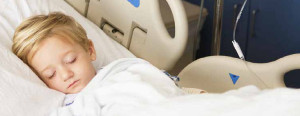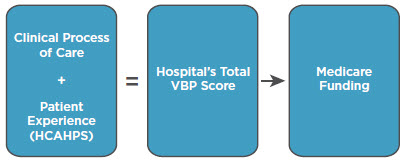Sound Masking in Hospitals Impacts Bottom Line
Sound Masking in Hospitals Impacts Bottom Line
 Sound masking in healthcare facilities can improve patient satisfaction — a key component of the Value Based Purchasing (VBP) program score.
Sound masking in healthcare facilities can improve patient satisfaction — a key component of the Value Based Purchasing (VBP) program score.
Disturbing noise and lack of acoustic privacy are typical concerns of traditional hospital environments. Noises from medical equipment and conversations can disturb a patient’s ability to rest. Additionally, overheard conversations can cause patients to become uncomfortable discussing sensitive issues with their doctors and family members.As patient satisfaction and quality of care becomes a greater focus, hospitals are seeking ways to increase acoustic comfort and privacy.
Obamacare Rewards Hospitals for the Quality of Care They Provide to Patients
As mandated by the Patient Protection and Affordable Care Act (Obamacare), The Department of Health and Human Services (HHS), has launched an initiative, known as the Value Based Purchasing (VBP) program, to reward hospitals for the quality of care they provide to Medicare and Medicaid patients.
VBP seeks to reward hospitals for improving the quality of care provided to patients. A low HCAHPS/patient satisfaction score translates to a lower overall VBP score, which will equate to a lower Medicare reimbursement for a hospital. The HCAHPS survey measures a patient’s perception of care on 10 dimensions, including the quietness of the hospital environment. Hospitals need to obtain at least a 50th percentile in each dimension to receive achievement points for full Medicare funding.
Nationally the HCAHPS measure for “Quiet at Night” reveals that patients are marginally satisfied with the hospital noise near their rooms at night. Excessive noise and the resulting lack of sleep top the list of patient complaints. When surveyed upon discharge, patients express their dissatisfaction with low ratings on questions about “Quiet at Night,” “Likelihood to Recommend,” and “Hospital Overall.”
A July 12th, 2013 HCAHPS survey of three randomly selected hospitals from the greater Boston metropolitan area (survey results publicly available at: www.medicare.gov/hospitalcare), revealed that the lowest performing area on the survey is the “Quiet at Night” category.
For each of the three hospitals, 56%, 47%, and 52% of patients reported that the area around their room was “always” quiet at night, which means that almost half of all patients surveyed were dissatisfied with the noise levels around their rooms at night.
Patient satisfaction scores must exceed the 50th percentile in each category for a hospital to receive achievement points, and therefore a full share of funding.
Funds that a low-scoring hospital does not receive will be reallocated to higher-ranking hospitals.
Increase Patient Satisfaction By Building a Better Acoustic Environment
There are many ways a hospital can improve their acoustic environment.
Give each patient their own individual room.
This option significantly increases construction costs and, in previously existing hospitals, reduces patient capacity resulting in reduced funding.
Add barriers and other sound blocking materials in public spaces.
This option increases construction costs and creates a less inviting space with less natural light and airflow, resulting in decreased comfort for patients and visitors.
Add sound masking.
This option is easily integrated into existing spaces, allows hospitals to keep spaces open for more natural daylight and airflow, and increases the ability for hospitals to use an inpatient room to house more than one patient.
Simple and Effective Sound Masking
The simplest and most effective sound masking system designed for hospital environments is the Cambridge Sound Management Qt Quiet Technology sound masking system. The Qt system provides continuous background sound, is designed to fit into any space and covers unwanted hospital noises and conversations, making the resulting environment feel more private and comfortable.
Further Reading
To learn more about how sound masking can improve your hospital’s acoustic environment—and your Medicare funding—go to Sound Masking in Hospitals and download the 12-page guide, “Sound Masking Solutions in Healthcare”








